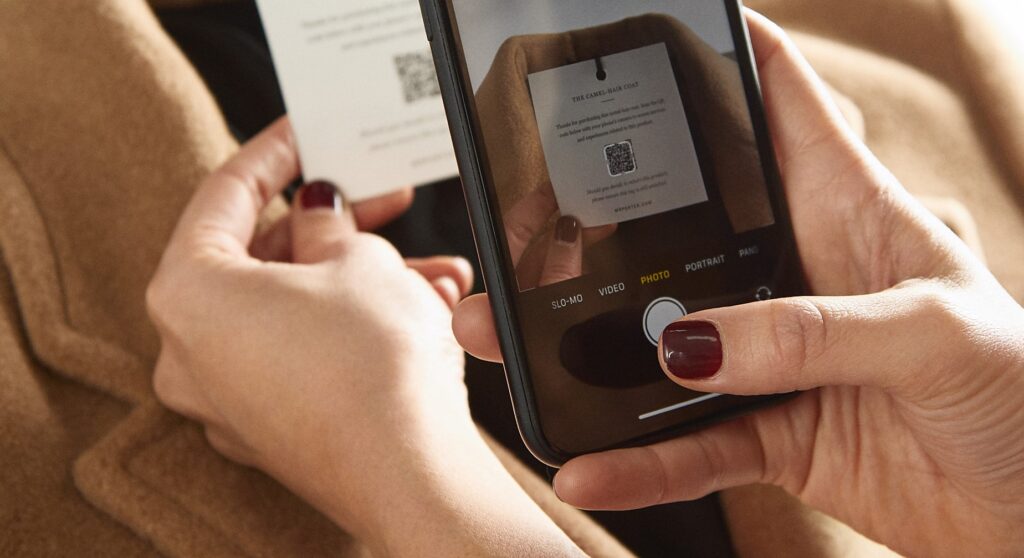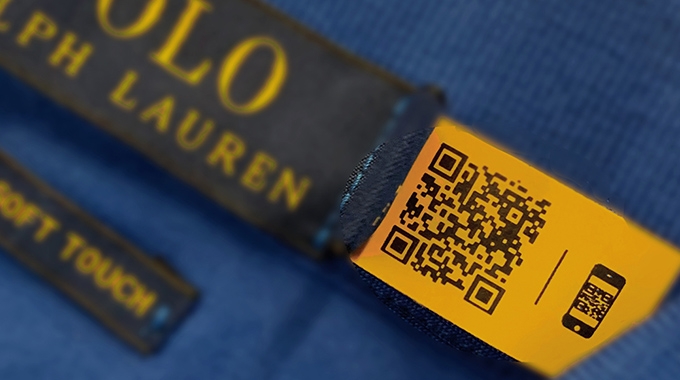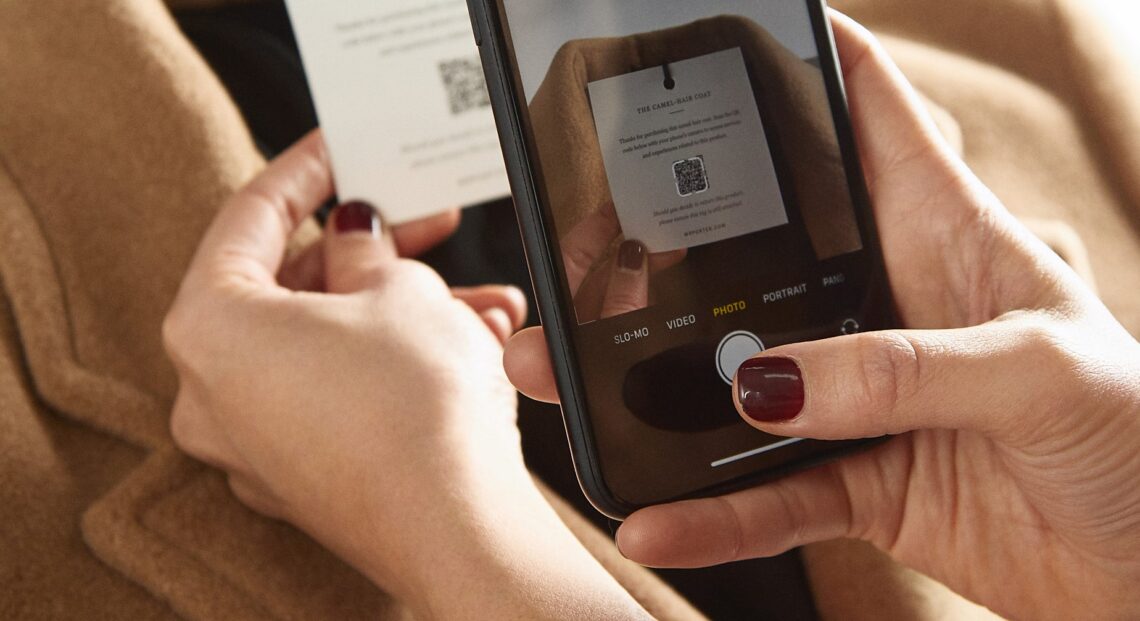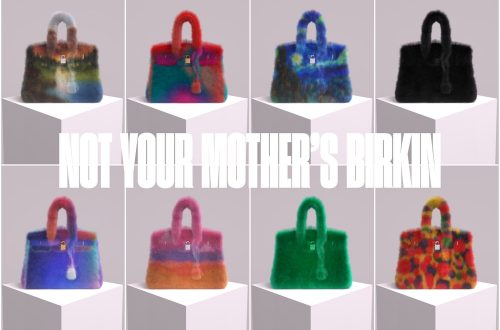Have you ever purchased a piece of second-hand clothing and asked yourself: “I wonder what’s the history behind it”? Well, according to where the fashion industry is headed to, it might not be long until you can answer that question.
“The moment a product is sold, the brand no longer recognizes it as asset”, says Natasha Franck, the New York-based founder and CEO of EON, whose digital product ID concept has received backing from Net-a-Porter founder Natalie Massenet.

EON is one of many tech startups that aims at enabling brands to track products past the point of sale using Digital IDs: the ambition is to improve traceability and, most importantly, open up new revenue streams for brands. Massenet explains that she is on a mission to create an ‘ecosystem’ that will allow brands to go beyond understanding what happens to their products after sale and develop a network of trusted – and paying – partners in the circular economy. The challenges are many: EON has to convince brands, and consumers, that digital IDs are necessary.
Natalia Franck bootstrapped EON’s foundation in 2015 and used a $150,000 grant from the H&M Foundation to get the startup off the ground. “I self-funded in the early stages because no one wanted to give me money”. Ever since then her client base has started to expand and, today, includes Mulberry, Net-a-Porter and Gabriela Hearst. Even though EON has declined to share its revenues, it is disclosed that the annual recurring revenue growth is of 250%.
The cost brands pay per Digital ID rises as more functions are added. EON would not share its fees but says brands can keep costs down by continuously relying on existing garment labels. Mulberry CEO Thierry Andretta says: “The cost is absolutely affordable and the authentication it provides matters to customers”, he continues, “[…] This is the future”.
What is the main idea behind digital IDs?
Being a kind of virtual product passport, Digital IDs give customers access to design and provenance information, styling tips, care instructions and repair services via discrete QR labels and NFC tags. These unique IDs can be used to record each item’s history: telling its story from manufacture through use, resale, reuse, and recycling.
Digital IDs are designed with ease and accessibility in mind. Each item has a tag discreetly located inside the product with either a QR code or an NFC tag (a small chip activated by your phone). It doesn’t even require a special app. By simply scanning the QR code with a smartphone camera or holding the phone close to the NFC tag customers can access information, engaging content and services related to that individual product.

Normally when we buy a garment and remove its tags, it becomes very challenging to reliably trace where it was made, what it is made of, and whether it is authentic. This can make it more difficult to properly care for, resell or even recycle items.
Digital IDs could pave the way for the fashion industry to overcome these challenges.
It is not absurd to picture a future in which Digital IDs play an important part in shifting mindsets around longevity and circularity. This technology provides an opportunity for customers to engage more deeply with their luxury and fashion products – see how they have been made, where they come from, and eventually enable them to be passed onto a new owner more easily. This deeper connection helps empower us customers to make more informed choices that will extend the lifespan of our products in our wardrobes and beyond, ensuring that the pieces can be treasured for years to come.
There is a lot of excitement around Digital IDs: investors and the big fashion players are working with startups, such as EON, to pilot different technologies. Companies including LVMH and Prada launched the Aura Blockchain Consortium in spring 2021, a shared private platform that uses unique codes to authenticate product records that include ownership history, authenticity data, and material provenance. A customer who purchases a product receives an encrypted certificate containing information about how the product was made.
Additionally, IBM’s non-fungible token platform Arianee is partnering with luxury and fashion brands Breitling and Vacheron Constantin to test digital product passports. Hugo Boss has this summer announced it will roll out RFID technology with Nedap Retail. Members of the Sustainable Markets Initiative Fashion Taskforce such as Selfridges, Giorgio Armani and Vestiaire Collective have all committed to using Digital IDs in October 2021, to tag products and record details about their manufacturing and sustainability credentials.

Gabriela Hearst, the latest creative director of Chloè, was one of the firsts to put all of this into action. She affirmed: “Our type of client is not the type that buys and resells and puts the product to rent. She probably will have a piece and give it to a friend or her children. We work to be so desirable that they are a hand-me-down, so the most powerful tool for us is to understand how this fiber got made and how long it had to travel”.
Hearst, with her homonym brand, was the first fashion brand to introduce a Digital ID to all its products, as she has partnered with EON since her SS20 collection. For her, the ID promotes authenticity, an essential aspect for luxury brands: these codes allow a continued conversation between brands and future customers. For example, a brand could market to customers by including information about additional pieces that match the garment. This allows for the brand to continue communicating to customers or connecting with new owners, even if the piece is consigned. It could also provide more detailed and relevant recycling or provenance information than would fit on a traditional garment tag.
In return, the digital ID company such as EON will share data with the brand about the life cycle of the products, such as how the identities were interacted with and where they were scanned; this still is compliant with GDPR, as assured by Natasha Franck, as it is limited to only product data, rather than customer data.
Let me wrap it up with a question: Will Digital IDs be the new label of the future?
This outcome is becoming increasingly probable, and although at an early stage, brands are excited by the potential of this new technology and access to increase data. The concept of having a permanent digital trigger or QR code on the garment really unlocks the ability to move the whole industry forward, with data that will drive the necessary awareness and behaviors.
A more sustainable future for fashion is within our grasp. As apparel labels become more digital, every item owned will have a unique signature and means of unlocking vital information that will prolong its life.
If this doesn’t become common practice very soon, fashion’s longed-for circularity may never materialize.
By Antonio Cavallo






